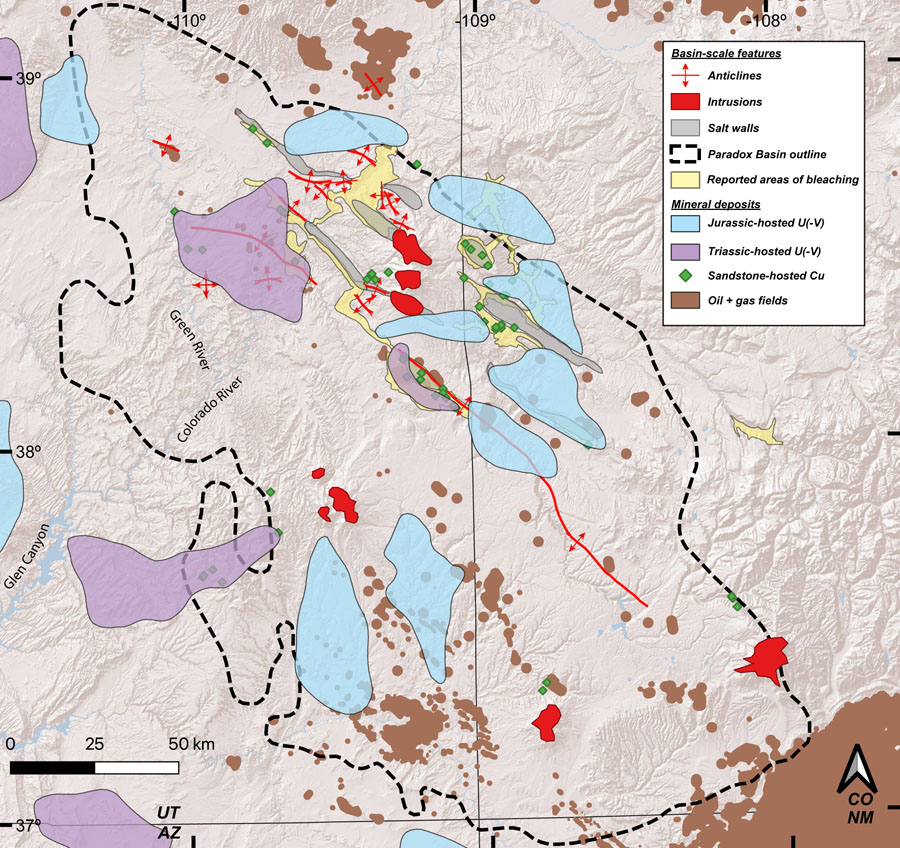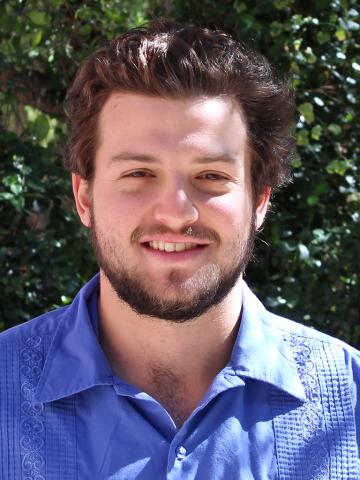Arizona Geological Society
2024 Speaker Series
Wednesday, 1 May 2024 | 5:30 - 8:00 PM
Location: Hexagon Mining Division Office
40 East Congress Street, Suite 150, Tucson, Arizona 85701
Parking: On the street or parking garage (Old Pueblo Parking)
Social Hour with Sandwiches from Beyond Bread (5:30-6:30 PM), Presentation (6:35 PM)
For those planning to attend the event, please register by 6:00 PM on Monday, 29 April, 2024
For those unable to attend, here is a
MS Teams URL for Remote Viewing
Remote Broadcast begins at 6:35 PM
Streaming URL Link
Join the meeting now
Meeting ID: 345 967 114 393
Passcode: jD7QCn
The Arizona Geological Society also thanks Hexagon
for generously providing the venue and drinks
Characterization of Contrasting Ore-Related Fluid Systems in the Paradox Basin Evolution
Eytan Bos Orent
Ph.D. Candidate at University of Arizona Department of Geological Sciences
Abstract: A long history of fluid-rock interaction in the Paradox Basin has resulted in geologically diverse products caused by a range of fluid sources and drivers. The La Sal district is an example within the basin of a locus of fluid systems that formed U(-V) and Cu(-Ag) deposits, salt wall-proximal bleaching, hydrocarbon-induced pyritization, and carbonate-stable alteration. New mapping throughout La Sal Creek Canyon at multiple scales highlights the spatial relationships and superimposed fluid systems present in the district that are representative of those found in the Paradox Basin. Additional SEM, EMPA, whole rock, and LA-ICP-MS analyses help constrain the geochemical conditions under which fluids interacted with their environments and the absolute timing of key geologic events.
The U(-V) sandstone-hosted, tabular ore bodies found in the Jurassic Morrison Formation are localized in lithofacies typical of channel-fill deposits and are commonly bound both above and below by floodplain mudstones. Alteration associated with these deposits is characterized by a core with abundant quartz cements, concretions containing U and V ore minerals, and relatively few carbonate concretions relative to unmineralized host rocks. Lower Fe and higher dOSMOW in authigenic carbonates in mineralized compared to mineralized sandstones provides evidence for distinct formation waters related to U(-V) mineralization. U-Pb geochronology of calcite intergrown with coffinite (U(SiO4) · nH2O) indicates an early Cretaceous age of mineralization that immediately follows the late Jurassic deposition of the host rocks but predates late Cretaceous thick foreland basin fill.

Simplified Geologic Map of the Paradox Basin UT-CO, illustrating basin-scale features
At least two Cu deposits in the Paradox Basin overlap in space with sandstone reservoirs containing obvious hydrocarbons adjacent to salt-related structures. Mapping at the Cashin Cu(-Ag) sandstone-hosted deposit shows several key relationships: concretionary carbonate cements are localized along the redox boundary that is presumed to be caused by hydrocarbon migration through porous sandstones, and Cu-sulfides are less abundant in units updip of the ore-controlling fault. Further evidence for the involvement of hydrocarbons in mineralization lies in the reconstructed water dOSMOW that overlaps with modern oil and gas pumping well brines. The age of mineralization is constrained by radiometric dating of calcite and dolomite veins from around the basin that contain intergrown Cu- and Ag-sulfides. A cluster of ages in the middle to late Miocene raises questions concerning the timing of mineralization with respect to major tectonic events in the North American Cordillera.
 Bio: Eytan Bos Orent is a Ph.D. candidate at the Dept. of Geosciences, University of Arizona. His advisor is Dr. Mark Barton. Eytan was a recipient of the Arizona Geological Society’s Courtright Scholarship in 2023.
Bio: Eytan Bos Orent is a Ph.D. candidate at the Dept. of Geosciences, University of Arizona. His advisor is Dr. Mark Barton. Eytan was a recipient of the Arizona Geological Society’s Courtright Scholarship in 2023.

Hexagon Mining Division Office - 40 East Congress Street,
Suite 150, Tucson, Arizona 85701